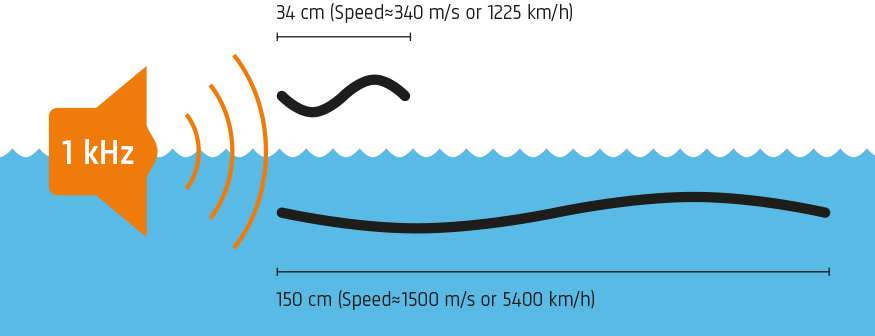Aquatic environments, particularly saltwater environments, introduce a variety of conditions that require special measurement considerations. Water incurs much less damping than air, so hydrophones must be able to withstand high sound pressure levels before distortion. The size of the sensor is less of an issue.
Because wavelength is the speed of sound divided by frequency and sound travels much faster through water, the waterborne frequency will have a longer wavelength than in air, so the sensing element can be larger. Hydrophones, depending on model, can function at depths of 1000 m and withstand static pressures of up to 100 bar. The exterior is also corrosion resistant to withstand high salinity, etc.
A hydrophone out of water
The elements that make these hydrophones great in the aquatic environment also translate to making them great microphones in non-aquatic environments, particularly extreme and harsh ones, like a launchpad or jet engine test stand. This comes into play in a couple of ways.
The lower sensitivity of hydrophones means that they can provide good, clean and undistorted data even with very high sound pressure levels generated by the item under test.The other facet is durability unmatched by traditional atmospheric microphones. The hydrophone’s ability to survive unattended in unhospitable environments means that it can be placed and forgotten.
Wavelength in air and in water for a 1 kHz tone
The wavelength is the spatial period of a periodic wave (the distance over which the wave's shape repeats)


